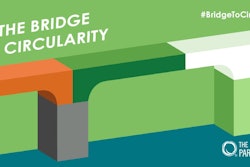As public demand for change puts pressure on companies to make external commitments to reducing waste or increasing recycling, the role of packaging within an organization continues to change. A packaging professional once held a more strictly technical role, mainly focused on product development and product protection. The modern professional’s role has greatly expanded to include expertise in sustainability.
From a positive perspective, packaging has been given focus and moved to the forefront. The challenge of meeting sustainability targets, however, remains quite daunting. Given this challenge, packaging professionals should consider the following fundamentals when beginning their sustainability journey.
1. Understand the portfolio. Knowing the type, specification, and volume of each type of pack system in the portfolio is a fundamental first step. This may seem obvious, but often it is not readily known within a wider organization. This can be due to a change in personnel, or simply a lack of focus on less common parts of a portfolio. Regardless, knowing exactly what is in the portfolio allows a map to be created and priorities to be identified.
2. Increase recyclability—make the portfolio “recycle ready.” Organizing a portfolio by material type (rigid plastics, flexibles, distribution, or secondary packaging) can help structure a logical, more manageable segmentation. Once placed in a segment, a deeper dive into the details of the specifications is required. An assessment of recyclability then can be made to understand the scope and size of the challenge. For example, many rigid plastics (bottles, containers) made from HDPE or PP can be deemed recyclable (or downcycleable), whereas many high-barrier laminates are not, because several different materials are used. All materials should be characterized by total weight used to help in prioritization.
Within each portfolio segment for the materials that are determined to be non-recyclable, a transition plan to alternate material compositions or even alternate systems is required. Here, understanding the sensitivity of the product under consideration is key. Often, due to speed to market or to lower risk, very robust specifications are used on products in-market, with the actual sensitivity of the product undetermined. For example, a laminate used in food applications may use an AL foil barrier for protection, whereas a metalized polypropylene layer may be sufficient. This would mean that a multilayer, non-recyclable material could transition to a material made up of polyolefins (thereby increasing recyclability).
3. Collection is key. Transitioning to a recycle-ready portfolio is only part of the solution. Without collection and support from recyclers, changing anything in the portfolio is not going to achieve the goal of true sustainability. Understanding what infrastructures and capability exist (both formal and informal) on a local level will help determine the best way forward for any portfolio change in specifications. Collection is an area that needs more focus, development, and support from not only the packaging industry, but also governments and non-governmental organizations. The reality is there are gaps in the desired closed loop between end users and value creators (recyclers).
4. Leverage partnerships. Internally, consider is how waste is treated in the current supply chain. Packaging waste (often clean) generated from operations often has a cost for disposal unless it is collected and diverted to value creators. If the latter is true, it can be leveraged potentially with waste from end users (pending logistics). If not true, the volume of operational waste should be added to the overall amount of waste in the portfolio. This gives scale to the value creator.
Externally, working with consortiums, recyclers, and suppliers should all be explored. Companies should also consider partnering with competitors to solve common sustainability challenges. These partnerships may go against convention, but the reality is no single company has enough volume to drive new collection systems or change public perception of packaging as “waste.” Meanwhile, sustainability has become a minimum expectation from customers and consumers.
5. Don’t forget PR and communications. Unfortunately, the term “waste” has become tied to packaging and plastics. This overshadows the value packaging brings in protecting and informing consumers and represents an additional challenge for packaging professionals. To counter this effectively, it is key to share success stories around sustainability, both internally and externally. With success comes the ability to change perceptions from looking at post-use packaging as “waste” to a more accurate description as “unexploited raw material.”
Overall, taking these few areas into consideration as part of a sustainability roadmap will help packaging professionals take on sustainability—a significant challenge of modern times.
The author, Mike Ross, is Senior Packaging Manager, Food Solutions Global, Unilever R&D, Vlaardingen, The Netherlands. He is an IoPP Certified Packaging Professional. To learn more about IoPP, visit www.iopp.org or email [email protected].


























